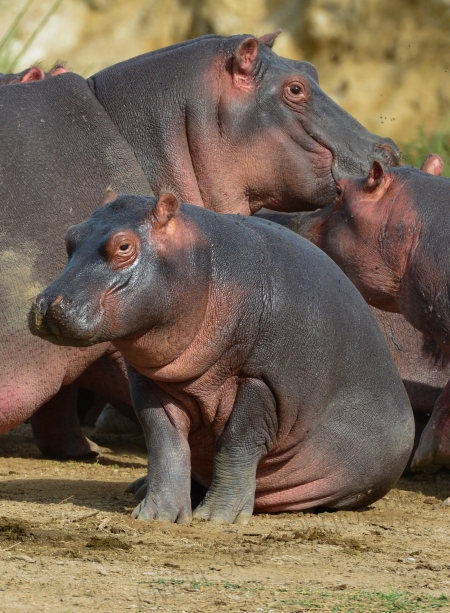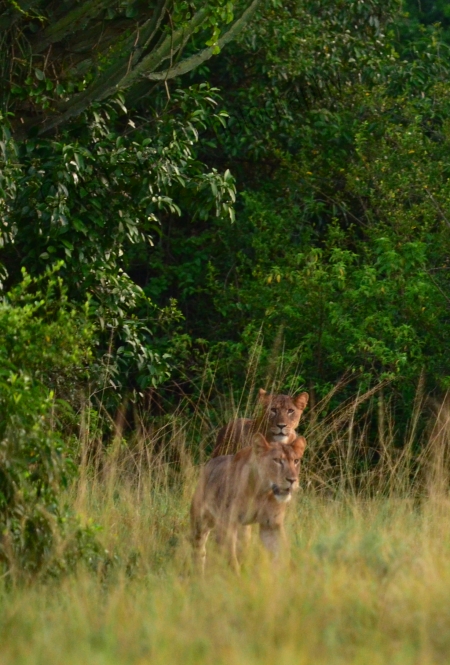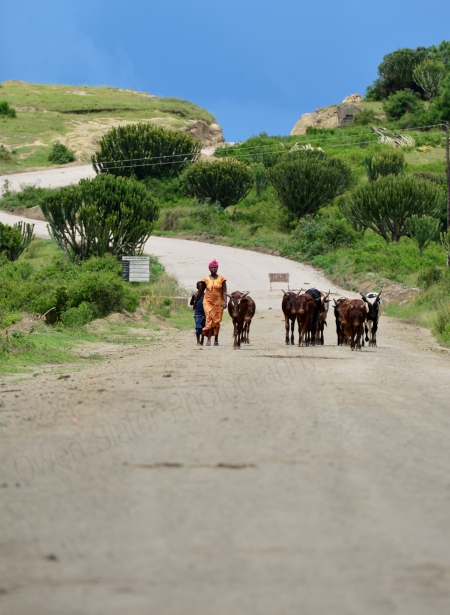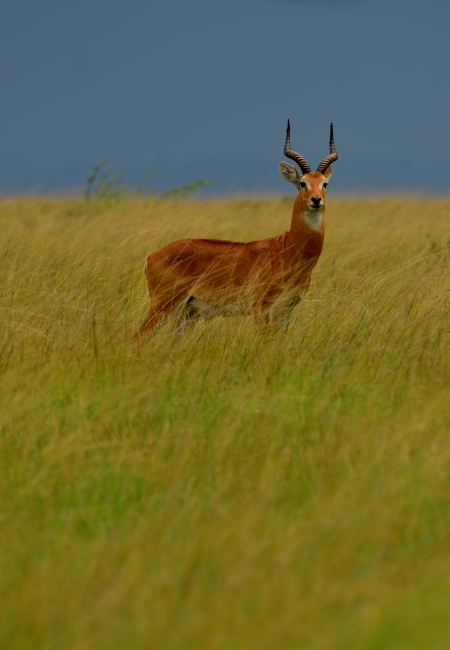
While their parents attend a ceremony, these kids make good use of a small playground as a storm builds in Western Uganda. This wouldn’t be uncommon to see in North America but this is the first time I have seen a playground for kids in Uganda!

While their parents attend a ceremony, these kids make good use of a small playground as a storm builds in Western Uganda. This wouldn’t be uncommon to see in North America but this is the first time I have seen a playground for kids in Uganda!

A child waits for company to arrive home near the banks of Lake Edward

A young bull elephant charges a buffalo which quickly got out of the way.

First, this scene is one uniquely African. A man rests in his brightly coloured fishing boat while his wife takes care of their baby while keeping an eye on a buffalo. Buffalo are one of the fiercest animals in Africa and they will actively defend themselves and members of the herd. However, this old bull didn’t seem to care about anything other than sleeping. Once a bull gets dethroned, he leaves the herd and lives out the rest of his days on his own or with other displaced males. This one seemed to have set up his territory in a small village in Queen Elizabeth National Park.
However, the more interesting fact, which seems to be unique to many countries in Africa, is that in general African babies cry substantially less than babies in North America. Repeatedly, this has been one of the only saving graces on my long, overcrowded bus rides throughout East Africa, where everyone is packed like sardines into the buses. I often wondered if this was just my own observation or if it had been studied. Indeed, it has been studied by a man named Ron Barr out of the University of Montreal. He and other researchers concluded that it is due to the fact infants are carried around in direct contact with their mothers for at least the first three months, fed much more often and provided immediate attention whenever they are in distress (as compared to North American infants that are often placed in a crib or only held for limited periods of time). Hopefully this catches on in other parts of the world as the last thing anyone wants is to listen to a crying baby!

A ‘little’ hippo gets up after a nap on the beach with it’s family. These hippos are used to people driving by in boats and not being hunted and therefore, it was a rare opportunity to see them out on land during the day.

Within a few minutes of starting a morning game drive, I came across these two lions as they made their way out of the forest in searched of some breakfast. Lion, leopard and hyena numbers within Queen Elizabeth National Park have drastically declined in recent years due to suspected poisoning and poaching by local herdsmen, whose cattle are periodically killed by the carnivores. Efforts are underway to reduce the losses of cattle by these animals and to reduce the amount of poaching that occurs within and adjacent to the park. Decreasing populations of lions is not unique to QENP, as the species is now considered threatened throughout the continent.

Two baby elephants, no more than a few months old, get in a little cuddle time under the watchful eyes of their mothers.

On a few occasions during this trip I noticed women herding cattle, which is almost exclusively a job assigned to boys and young men throughout East Africa. My hunch is that this is a product of the still tremendously high prevalence of HIV/AIDS leading to changes in family roles depending on who in the family survives.

While I enjoyed a four course dinner on the patio of Mweya Safari Lodge, this gecko feasted on a one course meal of lake flies. The flies were so numerous that in some spots, not a single portion of the walls could be seen. Thankfully, they don’t bite and aren’t strong fliers so all in all I would take these any day over mosquitoes or tsetse flies.

A man walks his bicycle loaded up with carefully stacked sugar cane stalks back to his village.

Under threatening skies, a Ugandan kob looks up from grazing on a windy day near Pelican Point in Queen Elizabeth National Park. Kob number in the thousands in QENP and are the main prey species for lions and leopards